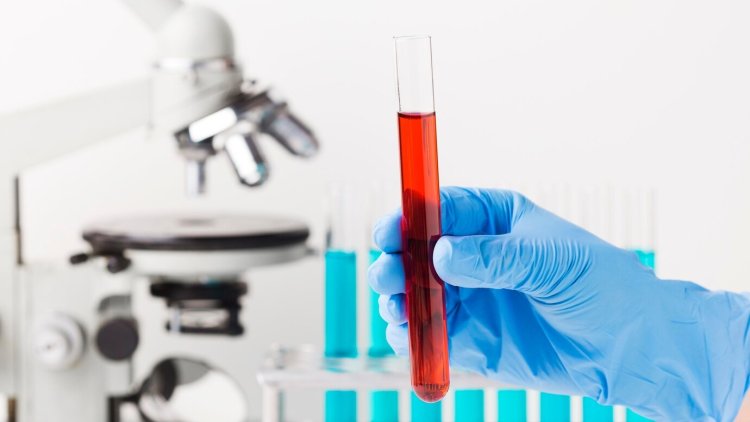Kickstart Your Career with a Phlebotomist Course: Learn the Art of Drawing Blood

Are you someone who doesn’t faint at the sight of blood and wants to make a real difference in healthcare? If you're in high school or just graduated and are exploring career options, a Phlebotomist course might be the perfect place to start. This career is all about collecting blood samples safely, skillfully, and respectfully—and it’s in high demand in clinics, hospitals, and labs around the world.
In this blog, we’ll break down everything you need to know about phlebotomy, what a Phlebotomy training program includes, and why learning about the Antecubital fossa (a fancy name for the inside of your elbow) is more important than you think!
What Is Phlebotomy?
Phlebotomy is the process of drawing blood from a patient for testing, donations, or research. The person who performs this job is called a phlebotomist. Their role is more important than it may seem at first. The samples they collect help doctors diagnose everything from infections to chronic diseases.
Why Choose a Phlebotomist Course?
Getting started in healthcare doesn’t always mean years of medical school. A Phlebotomist course is a quicker and more affordable path to a stable job in the medical field. You’ll learn how to:
-
Draw blood safely
-
Label and handle samples properly
-
Communicate with patients
-
Control infection and follow hygiene rules
Most importantly, you’ll gain confidence in handling medical tools and dealing with real patients—skills that can lead to even bigger healthcare roles in the future.
Understanding the Antecubital Fossa: The Sweet Spot for Blood Draws
Ever had your blood drawn from the inside of your elbow? That area is called the Antecubital fossa. It’s one of the most common places for phlebotomists to collect blood because it’s easy to access and has several good veins.
During Phlebotomy training, you’ll learn how to locate and identify the best vein in the Antecubital fossa. This includes:
-
Feeling for veins using your fingers (called palpation)
-
Recognizing which veins are safe
-
Avoiding nerves and arteries nearby
Knowing your way around the Antecubital fossa can make the difference between a smooth, painless blood draw and a difficult one.
What to Expect in Phlebotomy Training
A good Phlebotomy training program covers both theory and hands-on practice. Here's what you’ll typically learn:
Classroom Lessons
You’ll start with the basics of human anatomy, infection control, and safety. You’ll also learn:
-
The roles and responsibilities of a phlebotomist
-
How to identify different types of blood tubes
-
Medical terminology related to blood testing
Hands-On Practice
After learning the theory, you’ll move on to real-world practice. This includes:
-
Practicing blood draws on mannequins
-
Learning how to draw blood from different veins—including the Antecubital fossa
-
Performing supervised blood draws on real people
By the end of your Phlebotomist course, you’ll feel comfortable using needles, tourniquets, and collection tubes just like a pro.
Job Opportunities After a Phlebotomist Course
Once you finish your Phlebotomy training, you can work in:
-
Hospitals
-
Clinics
-
Diagnostic labs
-
Blood donation centers
Phlebotomists often work flexible hours and can earn a good income. It’s also a great stepping stone to other healthcare careers like nursing or medical assisting.
Is It Hard to Learn Phlebotomy?
Many students wonder if phlebotomy is hard to learn. The answer? Not really—especially if you have a steady hand, good people skills, and a calm personality. Most Phlebotomy training programs can be completed in a few months. Some even offer evening or weekend classes, so you can train while working or attending school.
The biggest challenge is learning to stay calm under pressure, especially when patients are nervous. That’s why practicing on real people during your course is so helpful. You’ll learn to be gentle, efficient, and confident.
Tips for Choosing the Right Phlebotomist Course
Not all training programs are created equal. Here’s what to look for when picking the right Phlebotomist course:
-
Accreditation: Make sure the program is recognized by national healthcare organizations.
-
Hands-On Experience: The more practice you get, the better.
-
Certification Preparation: Some states require certification. Choose a course that helps you prepare for the exam.
-
Positive Reviews: Check what past students say about the instructors and job placement help.
One program that stands out is offered by Centauri World, a trusted name in healthcare training. They focus on small class sizes, expert instructors, and real-world experience to get you job-ready fast.
Common Questions About Becoming a Phlebotomist
How long does it take to become a phlebotomist?
Most Phlebotomy training programs last between 4 to 12 weeks, depending on the format and location.
Do I need to be good at science?
Not necessarily! While some basic biology helps, the most important skills are patience, focus, and people skills.
Can I take a Phlebotomist course online?
Some programs offer online theory lessons, but hands-on practice is always done in person. You can't learn how to draw blood from a video—you have to practice!
Final Thoughts
A Phlebotomist course is more than just learning how to draw blood—it's about helping people in a moment of need. Whether you're calming a scared child, helping a nurse with a difficult draw, or making sure samples are labeled correctly, you're playing a vital role in healthcare.
With the right training and a little bit of courage, you can step into a growing field with strong job security and lots of opportunities. And remember, whether you're mastering the Antecubital fossa or learning to talk gently to nervous patients, you're making a real difference.
Start your journey today with a program that puts you first—Centauri World could be your gateway to a career you’ll be proud of.
What's Your Reaction?
















.jpg)
.jpg)

